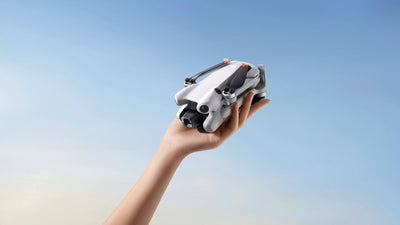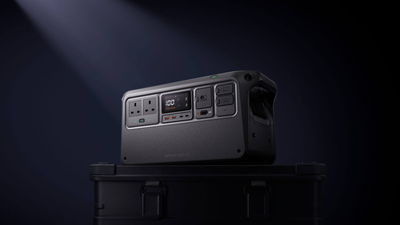Why Obstacle Avoidance Is A Game-Changer In Drones
- by Stefan Gandhi
In the fast-evolving landscape of drone technology, obstacle avoidance stands out as a transformative leap forward. Whether you're capturing cinematic landscapes or conducting precision inspections, the ability of a drone to intelligently navigate its environment is reshaping what users can expect from aerial systems. DJI's collision avoidance capabilities exemplify this evolution, bridging the gap between raw potential and refined performance.
The Core of Collision Avoidance: How It Works
A DJI drone with collision avoidance is not just another UAV. It is an intelligent flying system outfitted with an array of sensors and cameras designed to scan the environment continuously. These components feed real-time data into sophisticated algorithms, enabling the drone to identify, evaluate and manoeuvre around obstacles in its flight path. This seamless orchestration ensures autonomous navigation, reducing the risk of crashes and elevating the reliability of the drone across use cases.
Why It Matters: Elevating Safety and Performance
For both commercial operators and hobbyists, the stakes in drone flights are high. Crashes can mean not only costly repairs but also potential harm to people and property. DJI's collision avoidance technology addresses this head-on. By detecting obstacles early and rerouting flight paths dynamically, these drones dramatically cut the likelihood of accidents.
But the benefits extend beyond just safety. The smoother flight paths enabled by obstacle detection lead to cleaner, more stable footage. For aerial photographers and filmmakers, this translates to higher quality content with minimal need for retakes. For professional users, such as surveyors and inspectors, it means more accurate data collection and reduced downtime.
Recent Breakthroughs: DJI's Technological Edge
DJI has continually pushed the boundaries of what is possible in autonomous flight. Recent advancements include the integration of omni-directional sensing and AI-enhanced flight planning. These developments equip drones with a near-complete 360-degree awareness of their surroundings, allowing for real-time decisions even in complex environments like dense forests or urban construction zones.
One standout component in this ecosystem is LiDAR (Light Detection and Ranging) technology. By emitting laser pulses to measure distances, LiDAR creates detailed 3D environmental maps. This adds another layer of precision to obstacle avoidance, particularly in low-light or visually complex conditions. Combined with visual and infrared sensors, DJI's modern drones can now operate safely even in scenarios that would have grounded older models.
Use Case Explosion: Industry Adoption
The practical applications of DJI drones with obstacle avoidance are multiplying across sectors:
- Agriculture: Collision avoidance ensures drones can fly close to crops without damaging them, supporting tasks like crop monitoring, spraying, and soil assessment.
- Construction: These drones provide safe site surveillance, structure inspection, and progress documentation, even in crowded or scaffold-heavy environments.
- Filmmaking: For directors chasing the perfect aerial shot, obstacle avoidance offers the freedom to fly low and close without risking gear or footage.
- Search and Rescue: Navigating through debris or dense foliage becomes feasible, enabling faster response times and increased chances of success in critical missions.
Across these industries, obstacle avoidance is not merely a safety feature; it is a force multiplier, unlocking more advanced, confident and mission-critical drone operations.
Consumer Confidence and Commercial Gains
For consumers, the peace of mind that comes with obstacle avoidance is invaluable. Whether gifting a drone to a family member or investing in one for weekend adventures, the reduced risk of crashes enhances enjoyment and satisfaction. For commercial users, the return on investment becomes clear: fewer accidents mean lower maintenance costs, fewer delays and more reliable performance.
Even regulators have taken note. As safety becomes a cornerstone of drone legislation worldwide, operators using drones with robust obstacle avoidance are better positioned to meet compliance standards and secure operational approvals.
Conclusion
DJI's collision avoidance technology has moved from an optional add-on to an industry benchmark. It redefines user expectations, fuels sector adoption and fortifies the drone's role as a safe, intelligent aerial partner. Whether you're a hobbyist, a commercial operator or a tech-forward enterprise, integrating drones with obstacle avoidance into your toolkit means you are ready to fly further, smarter, and safer.
Explore DJI's latest range of drones on the Coptrz online store here.




